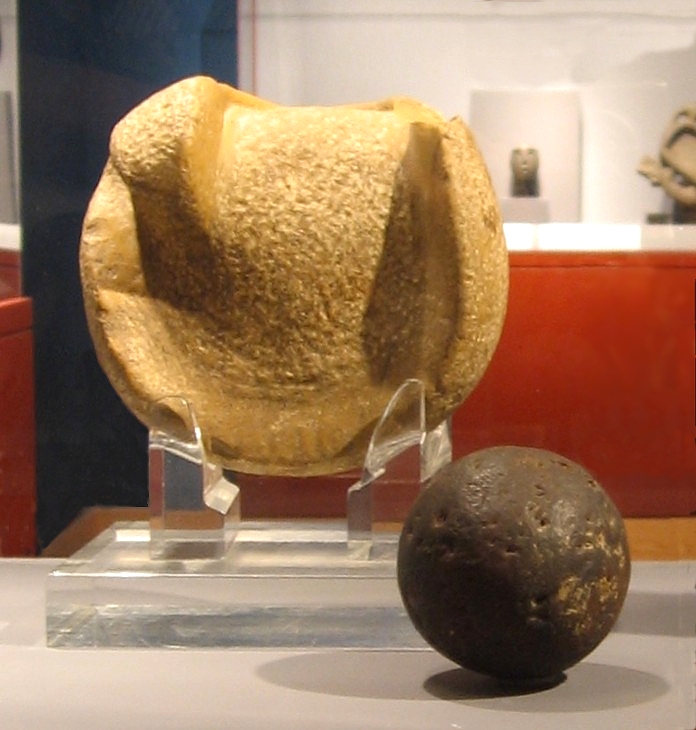MIT scientists have determined that pre-Hispanic Mesoamericans not only figured out how to produce rubber from the sap of the native Castilla elastica tree 3500 years before Charles Goodyear developed the vulcanization process, but they even engineered a variety of different polymers for different applications.
By combining different proportions of Castilla elastica sap and juice from the morning glory, ancient Mesoamericans could produce different rubbers for bouncing balls, sandal soles, drumstick tips, even large rubber bands to attach axe blades to handles.
A sticky liquid that dries to a brittle solid, natural latex, which contains an oily chemical called isoprene, was mixed with juice from the morning glory species Ipomoea alba.
As the first polymer scientists, the Mesoamerican people stirred the liquid until it solidified into a white mass which they shaped by hand into rubber balls, hollow rubber figurines, and other rubber artifacts.
The process relies on chemistry similar to that of modern vulcanization: The juice of the morning glory vine causes cross-linking of polymer molecules, making the rubber elastic and removing compounds that turn latex brittle. […]
A 50-50 blend of the latex and morning glory produced maximum bounciness, perfect for the rubber balls. Pure latex worked best for rubber bands and adhesives, while a three-to-one mix of latex to morning glory provided the most durable material, perfect for sandals.
By the time the Spanish arrived, Mexico had a huge rubber industry, producing 16,000 rubber balls a year as well as a wide variety of other products. The balls were used in ceremonial games played on stone courts like handball.
A few ancient Mesoamerican rubber balls have been found, the oldest dating back to 1600 B.C. The one below is more recent, from between 300 B.C. to 250 A.D. Behind it is a stone mitt called the manopola. Players strapped it to their hands and used it to hit the rubber ball. You can see where his thumb would have gone on the side and his fingers up top.

This is really cool! It’s neat to see that the ancient Mesoamericans used rubber was used for all types of things, from ceremonial games to tools. They were such an innovative and intelligent people. I would not be surprised if one day we discover that they actually invented Tupperware. 😉
Oh man, I would totally start worshiping Quezacotl if it turned out Mesoamericans invented Tupperware. :notworthy:
Would this mean that the balls used for the games on the I-field were made from rubber or were they definitly not? It would make the feat of getting the ball through the very high ring a bit more sane…
Yes, they were made from rubber, and since the Mesoamericans knew how to adjust the formula for bounciness or stretchiness or durability, the balls could go as high as necessary.
So bizarre, it would seem like a job if I didn’t think it was totally possible. Some day we are going to find out that not only did they also invent tupperware, they had cars, space travel, and carpooled to school. Only they did it all better than us.
And we’ll found that out at 11:59, December 31, 2011. WHEN IT’S TOO LATE TO STOP THE APOCALYPSE.
Quite intriguing and interesting article :hattip: . It reminds me very much useful morning glory blue dye for Malaysian kuih very sweet.
I didn’t know morning glories were involved in the making of kuih. I didn’t even know they were edible. :thanks:
Well, thank God Leopold II of Belgium didn’t find out about Mexico. The Spanish were bad enough, but Leopold turned the Congo Free State into a massive slave labor camp to produce rubber for Goodyear to make tires for the Ford Model T. He killed 10,000,000 people.